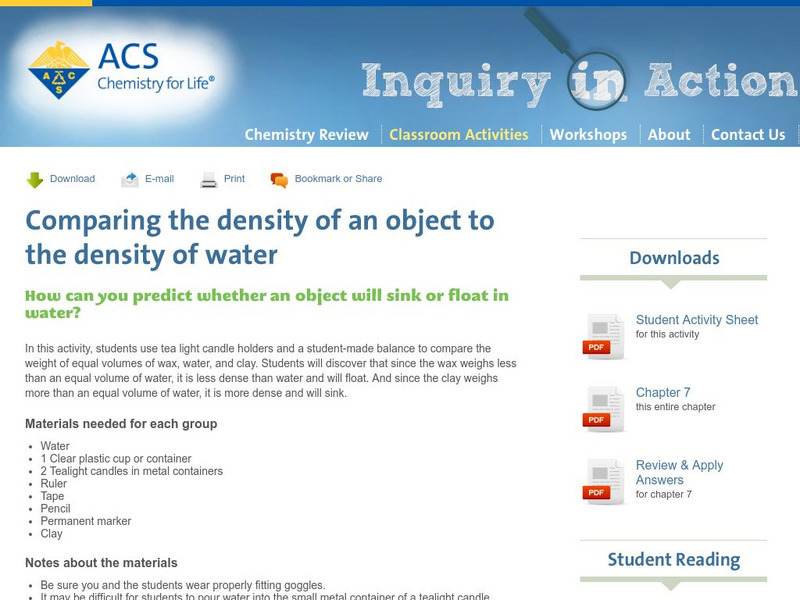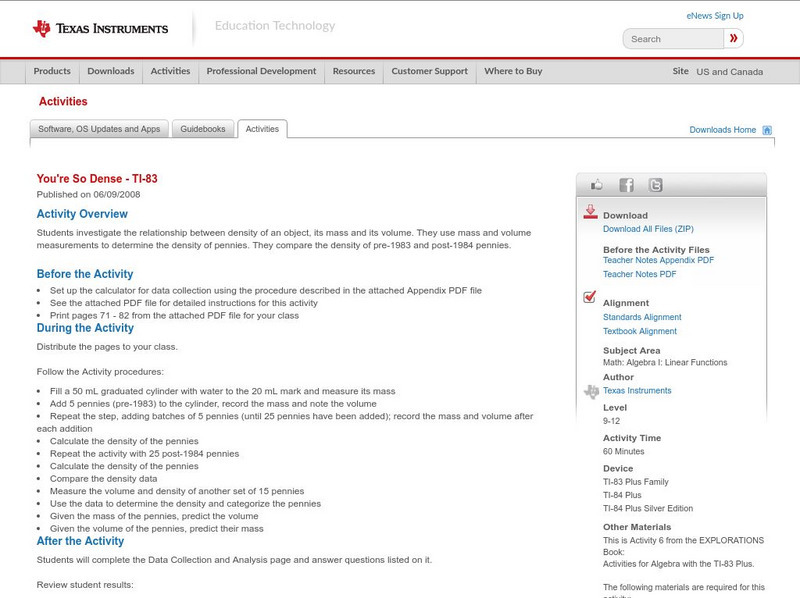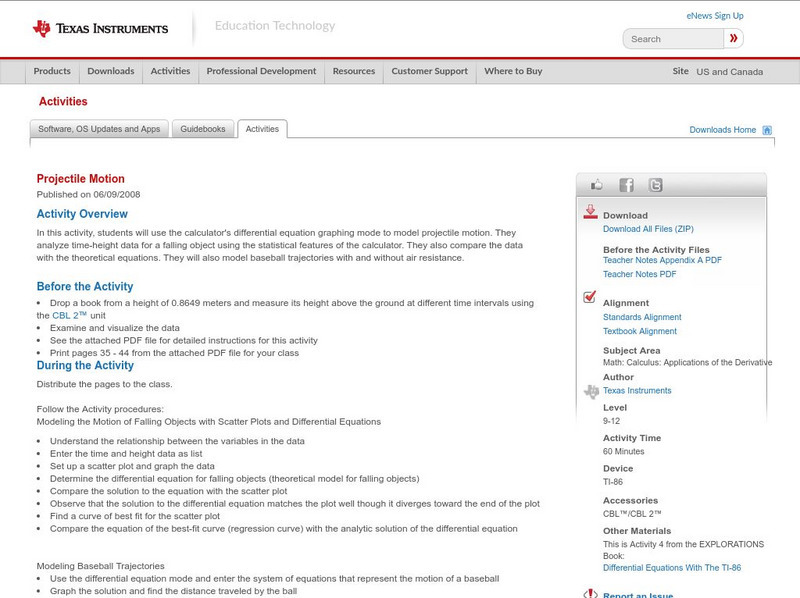Curated OER
A Penny for Your Thoughts
Young scholars collect pennies to donate to Kiwanis International for their international effort to buy salt for children's bone development. They calculate the amount of money donated, calculate how many children will receive salt, and...
Curated OER
Snacks 'R Us
First graders experiment with fat content by analyzing snack foods. They learn what makes up a nutritious snack.
Curated OER
Can You See It, Touch It, Hear It?
Students develop and practice observational skills through lab activity.
Curated OER
Painless Poetry
Students choose two poems they like and share them with the class. Then they write their own poems using various forms.
Curated OER
Italy: Festa del Grillo
Students examine the traditions of the Festa del Grillo in Italy and its relationship to the culture of Italy. After being shown examples, they create their own cricket out of materials found in the classroom. Using 3D, they decorate a...
Curated OER
Math All Around Us
Students identify real world problems from given story problems. In this story problem lesson, students find places, events or items in the school environment that can be used to create story problems. Students take a picture of the...
Curated OER
Guess Who? Coral
Fourth graders identify and group coral formations. In this coral identification lesson, 4th graders examine coral pictures, discuss vocabulary, and provide similarities and differences in the growth formations.
Curated OER
Color and Spectrum
Students examine the spectra of light sources that have similar colors. In this light lesson students complete an activity using various lights in the classroom and discuss the colors and the heat generated.
Curated OER
Daily Life in the Fur Trade: Communications & Resourcefulness
Student complete a number of activities using computer based resources and primary sources to research the fur trade. They answer questions using the computer research.
Curated OER
Tree Identification
Students are introduced to the characteristics of trees and different techniques to identify them. They distinguish between a deciduous and a coniferous tree. Students describe at least four characteristics used to identify trees. They...
American Chemical Society
Inquiry in Action: Compare the Density of an Object to the Density of Water
In this activity, students use tea light candle holders and a student-made balance to compare the weight of equal volumes of wax, water, and clay. Students will discover that since the wax weighs less than an equal volume of water, it is...
Texas Instruments
Texas Instruments: What's the Scale?
The objective of this lesson is to have students determine the scale of a model when compared to the actual object. They will measure parts of the actual object and then compare the corresponding part of the model to determine the scale...
Texas Instruments
Texas Instruments: You're So Dense Ti 83
Students investigate the relationship between density of an object, its mass and its volume. They use mass and volume measurements to determine the density of pennies. They compare the density of pre-1983 and post-1984 pennies.
Texas Instruments
Texas Instruments: Projectile Motion
In this activity, students can use the calculator's differential equation graphing mode to model projectile motion. They analyze time-height data for a falling object using the statistical features of the calculator. They also compare...
Alabama Learning Exchange
Alex: Animals That Measure Up!
Young scholars will learn how to order items by length. They will use plastic toy animals for hands-on learning and then students will locate pictures of animals of various lengths and sizes in their natural habitat on the Internet. They...














